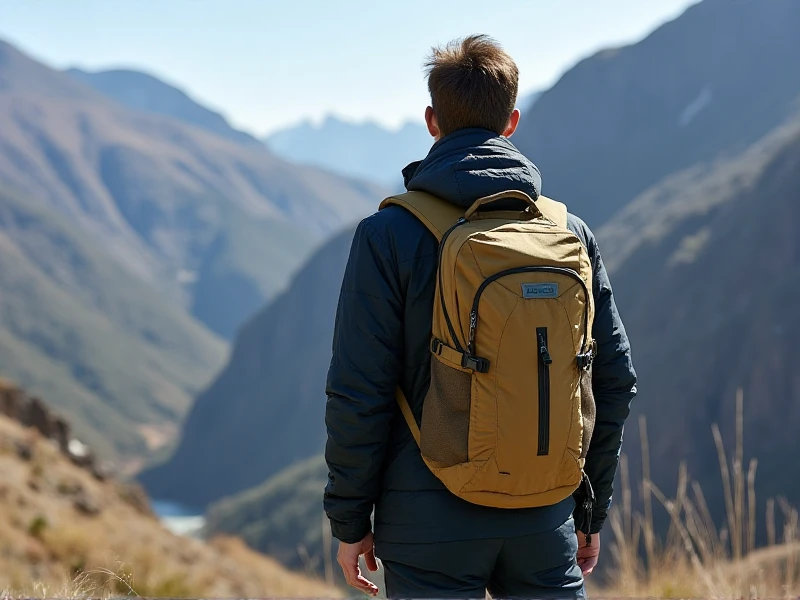The Ultimate Women's Outdoor Backpack Guide: Comfort, Style & Adventure Ready
2025-06-01

Embarking on an outdoor adventure requires reliable gear, and for women, a well-fitting backpack is non-negotiable. Finding the ideal Women's Outdoor Backpack blends ergonomic design, practical functionality, and often, a touch of personal style. Forget struggling with ill-fitting packs borrowed from others or designed without female anatomy in mind. Today's market offers incredible options specifically engineered to empower women on the trail, at camp, or exploring cities.
Why a Women-Specific Design Matters
While unisex packs exist, hiking backpacks for women address key biological differences. Women typically have:
Narrower Shoulders: Straps are set closer together and contoured to prevent slipping and chafing.
Shorter Torso Lengths: Packs come in various torso sizes to ensure the hip belt rests on the hips (carrying most weight) and the shoulder straps connect properly.
Curvier Shoulders & Hips: Straps are more sculpted, and S-curved hip belts offer superior comfort and weight distribution.
Narrower Waists: Hip belts taper effectively to prevent bouncing.
Ignoring these factors can lead to discomfort, fatigue, and even injury on longer journeys.
Essential Features to Look For
1. Superior Suspension & Fit System:
Adjustable Torso: Crucial! Measure your torso length accurately (C7 vertebra to iliac crest). Any quality women's adventure backpack offers multiple sizing options.
Women-Specific Harness: Look for straps that narrow slightly toward the sternum strap and curve inward at the collarbone.
Hip Belt: This is your workhorse. Seek a thick, padded, anatomically curved women's hip belt backpack. Load lifters (straps on top of shoulders) fine-tune fit.
2. Effective Ventilation:
Trampoline Back Panels: Creates space between your back and the pack, promoting airflow and reducing sweat buildup.
Mesh Panel & Padding: Strategically placed mesh and contoured foam increase comfort and breathability.
3. Smart & Accessible Compartments:
Easy Top or Front Access: For grabbing essentials like snacks, rain jacket, or a map quickly.
Hydration Compatibility: Dedicated sleeve and hose ports are standard for outdoor travel packs for women and hiking.
Organized Pockets: Multiple zippered pockets (hip belt, lid, internal) keep gear sorted. Look for gear loops or attachment points.
Bottom Compartment: Often used for sleeping bags or separating dirty items like boots.
Side Pockets: For water bottles or tent poles.
4. Durability & Weather Resistance:
Quality Material (Nylon/Polyester): High denier ratings indicate strength. Look for reinforced high-wear areas.
Protective Finish: DWR (Durable Water Repellent) coating sheds light rain. A rain cover (included or sold separately) is vital for wet climates.
5. Practical Volume & Weight:
Daypacks (20-35 Liters): Ideal for hiking, day trips, or travel as hand luggage.
Multi-Day Packs (50-65 Liters): Sufficient capacity for overnight or weekend backpacking trips.
Extended Trek Packs (65 Liters): Needed for week-long adventures carrying tent, food, and more.
Minimalist Gear: Modern lightweight women's backpacks allow for smaller, more comfortable carries. Pack smart!
Material Choices: Durability vs. Weight
Robust Nylon (e.g., Cordura): Excellent abrasion resistance for rugged backpack travel.
Lighter Nylon/Polyester Blends: Prioritizes weight savings for lightweight women's backpacks suited for thru-hiking or speed-focused trips.
Ripstop Fabrics: Prevent small tears from spreading, enhancing longevity.
Finding Your Perfect Volume
Matching pack size to your adventures prevents overpacking:
Day Hikes (1-10 miles): 20-30 Liters – pack essentials like water, snacks, first-aid, extra layers.
Overnight/Weekend Trips: 40-55 Liters – Carry sleeping bag, pad, tent (split shared gear), stove, food, water.
Multi-day Trekking (3-5 days): 55-70 Liters – Accommodate more food, fuel, clothing layers.
Extended Expeditions (5 days): 70 Liters – Necessary for remote, self-supported journeys.
Urban Travel/Day Use: 15-25 Liters – Focus on accessibility, style, and comfort for daily commutes or city exploration.
Finding Your Best Fit: Try Before You Buy (If Possible)
Measure Torso & Hips: Follow manufacturer instructions meticulously.
Try Loaded: Test the pack with weight (use sandbags or gear at the store). 15-20 lbs approximates trail load.
Adjust Thoroughly: Fine-tune straps, hip belt, and load lifters with staff assistance if available.
Move: Walk around, bend, mimic trail movements. Ensure no pinching, excessive sway, or pressure points. The women's outdoor backpack should feel like an extension of you.
Top Buying Considerations
Trip Types: What adventures are primary (day hikes, mountaineering, international travel)?
Fit: The absolute most important factor – prioritize comfort above all else.
Weight: Consider the base weight of the pack itself, especially for longer trips or minimalist hikers.
Features Needed: Hydration, specific pockets, gear loops, trekking pole attachments?
Durability vs. Packability: Balance toughness for rugged terrain with flexibility for travel.
Warranty & Brand Reputation: Invest in brands known for quality and customer service.
The Takeaway
A well-chosen Women's Outdoor Backpack transforms your experience. It empowers you to carry your world comfortably, focusing on the scenery and the journey, not shoulder pain or awkward loads. Investing time in research and ensuring a perfect fit unlocks comfort, efficiency, and greater confidence on every trail – whether conquering mountain peaks, navigating city streets, or discovering hidden campsites. Gear up with the right pack, and embrace the freedom of the outdoors. Adventure awaits!
Category: